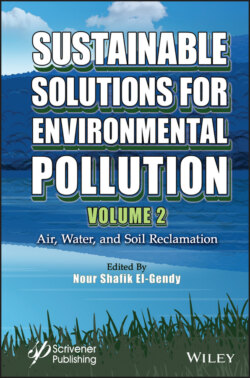Читать книгу Sustainable Solutions for Environmental Pollution, Volume 2 - Группа авторов - Страница 40
1.10 Improving Bioremediation Systems 1.10.1 Introduction
ОглавлениеAs presented above, microorganism capacities to metabolize pollutants and convert them to non-toxic forms by redox reactions support the microbe-assisted or microbial bioremediation technologies. Some recent bibliographical reviews synthesize the knowledge acquired in microbial bioremediation with or without associated plants. Shahid et al. (2020) provide an in-depth insight into the specific role of microbes in bioremediation systems, specifically on rhizosphere-plant interactions in floating wetlands, but also relevant to CWs (Shahid et al., 2020b).
Phytobiome around plant roots play a significant role in organic pollutant biodegradation during bioremediation process. The main ways of mobilizing phytobiome in bioremediation are as follows:
1 Bio-sorption is the passive adsorption of dissolved pollutants on the surface of living or dead cells. The pollutant changes phase but remains available in the environment. Bio-sorption can be a possible preliminary step to a proper biodegradation but it is not an actual removal from the environment. Adsorption intensity varies considerably depending on the hydrophobicity, structure, and functional groups of the pollutant involved. Pollutants with cationic groups are more effectively biosorbed on cell surfaces through electrostatic interactions. Biosorption is used as physical-chemical process, for metal removal (Verma et al., 2008; Fard et al., 2011; Ali et al., 2020);
2 Bio-accumulation is an active metabolic process requiring energy from the living organism to absorb and concentrate pollutants. Harvesting the organisms and exporting them out of the contaminated environment, allow removing the pollutants from the treated environment;
3 Biostimulation by nutrient input, air injection (bioventing), or by microbial fuel cell (inexhaustible TEA setup). Biostimulation consists in increasing the activity of endogenous microbes by feeding them with nutrients (e.g., organic carbon and nitrogen) or TEA (e.g., bioventing and bioelectro-remediation). The nutrient content stimulates the microbial co-metabolism of organic pollutants. Additionally some free radical-producing microbial oxidation-reduction enzymes will non-specifically oxidize the aromatic rings, open them and make them degradable by microbial enzymes. Obviously, biostimulation technologies involving discharge of wastewater in natural water systems should be avoided, and must be limited to stimulation without chemical inputs. Biostimulation is backed up by the phenomenon of co-metabolism, i.e., the simultaneous biodegradation of two organic compounds, in which the degradation of the pollutant depends on the presence of the microorganism’s normal carbon source. The additional carbon source serves not only to support biomass production, but also acts as an electron donor for the metabolism of the non-growthrelated pollutant (Xiong et al., 2018);
4 Bio-augmentation consists of adding microbes to polluted water body to increase the biodegradation of contaminants. Bio-augmentation is possible when the biostimulation fails to meet the objectives, for example, when the indigenous microbes do not have the metabolic capability (gene pool) to degrade the contaminants, or when the contaminant is present at concentrations toxic to the indigenous microbes. Inoculated microbes may be derived from a selection, from a contaminated site, of microbes suited to the contaminant degradation, their lab enrichment, before inoculation on the contaminated site (Hussain et al., 2018). Obviously, on-site bio-augmentation prohibits the use of genetically modified organisms and introducing of recombinant microbial strains in natural environment in field applications. Bio-augmentation makes use of indigenous microbe strains such as microalgae, bacteria, and fungi. Addition of microbial cultures to accelerate biodegradation rate of pollutants. Microorganisms are sampled from contaminated sites where they are already capable of degrading some specific pollutants, depending on the pollutants contaminating the origin site. However, on-site application of bio-augmentation can pose problems of predation, nutritional competition between native and inoculated bacteria, too low inoculations, or ecological balance disturbance due to too large quantities inoculated.
